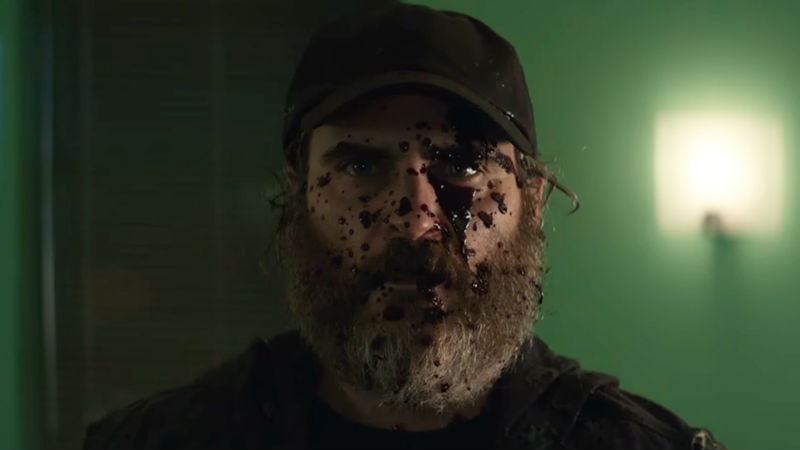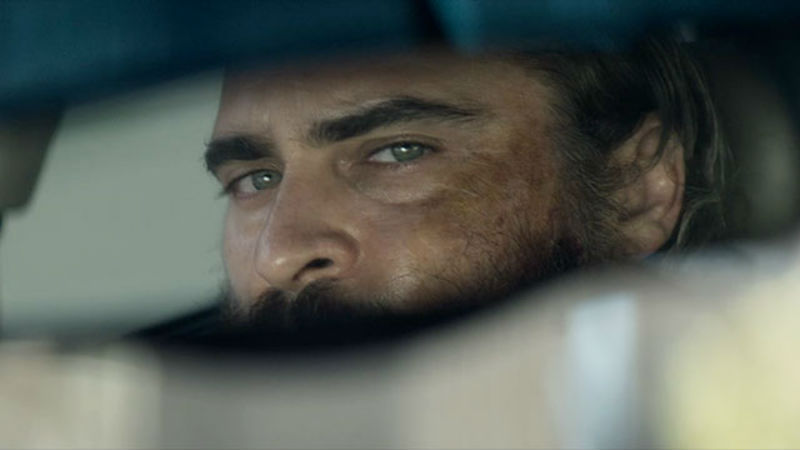Warning: this article contains minor spoilers
Plenty of films have violent content, that’s easy. Fewer possess a genuinely visceral quality that, for better or worse, leaves a lasting impression on you. But fewer still are actually about violence, about how it feels and what it means for victims, perpetrators and wider society. Here are 10 examples of where cinema has broached this darkly compelling subject, listed in chronological order.
.
1. A Clockwork Orange (Stanley Kubrick, 1971):
Kubrick’s idiosyncratic masterpiece begins with Alex (Malcolm McDowell) and his droogs beating, raping and stealing their way through dystopian Britain in one of the most electrifying – and objectionable – opening sequences in cinema history. It is a stunning synthesis of Kubrick’s wired, aberrant vision and McDowell’s supremely confident performance, creating a spectacle of the most indulgent amorality that draws the viewer in, almost making them the fifth droog.
Alex’s run is short-lived, however, and he finds himself locked up, with his only ticket to freedom being the revolutionary ‘Ludovico technique’. This turns out to be every Libertarian’s worst nightmare – a neurological procedure resembling abject torture that brainwashes its patient (or victim?) to hate whatever they are being forced to watch or listen to. In Alex’s case, he is programmed to hate – be physically reviled by – sex, violence and, as an unfortunate by–product, his beloved Beethoven.
Now, this treatment certainly stops little Alex from tolchocking and doing the old ‘in-out in-out’, but whose idea of justice is this? Certainly not the prison chaplain’s (Godfrey Quigley), who remarks indignantly:
‘Choice! The boy has no real choice, has he? He ceases to be a wrongdoer… he ceases also to be a creature of moral choice.’
This is the dilemma at the centre of A Clockwork Orange. Could we afford the state this power, ostensibly for the greater good? Where would it start, where would it end? Would the treatment be extended to petty criminals? How many brains and lives would be ruined? Kubrick’s film posits many questions but provides no easy answers.
Click here for our dirty review of Stanley Kubrick’s A Clockwork Orange.
.
2. Straw Dogs (Sam Peckinpah, 1971):
Much like Deliverance, Sam Peckinpah’s Straw Dogs mires an ordinary (and slightly effete) man in a situation of animal violence. Anyone who’s been in a playground will recognise the bullyboy behaviour – the leering glances, hostile posturing, mocking remarks. All are designed to push the boundaries until all pretences are fatally dropped. This toxic dynamic looms over the film, giving it a nasty, foreboding dread.
Most unsettling is Amy’s (Susan George) relationship with Charlie (Del Henney), her broad, masculine old flame. Her persistent attraction to him – despite being married to David (Dustin Hoffman), an academic – represents the idea of women being attracted to dominant and potentially violent male behaviour.
This notion becomes particularly direct and controversial in two moments – a rape that becomes consensual and the manner in which David asserts his dominance over Amy in the violent climax, slapping her face, pulling her hair and ordering her to ‘stay there and do as you’re told, or I’ll break your neck.’ Although the film tells us little about the future of their relationship, there can be no doubt that David’s aggression gets both her attention and her respect. It is part of the toxic message that runs through Straw Dogs – violence, even sexual violence, can be a viable option.
.
3. Dirty Harry (Don Siegel, 1971):
Dirty Harry’s lowbrow appeal – and aestheticisation of violence – disguises a film that asks hard, dangerous questions about crime and punishment. It seems almost risible now, but long before Inspector Harry Callahan became the proverbial anti-hero stock character, critics took Dirty Harry really rather seriously, with some even labelling it “fascist”.
If you enter this film addled with political notions then perhaps you could see it as fascist. After all, Eastwood’s eponymous supercop plays fast and loose with the law – breaking and entering, torturing a suspect and ultimately becoming something of a free agent in the film’s denouement. But the question at the heart of Dirty Harry is an uncomfortable one. If you were the powerless victim of an unhinged and uncaught criminal, who would you want in your corner – the desk-bound bureaucrat or the ballsy, hard-nosed Inspector?
Ultimately, Callahan serves justice in his signature style, goading the snivelling, hateful Scorpio into retrieving his dropped P38 with the famed ‘Do I feel lucky?’ line. As he picks it up, Callahan delivers the last .44 round straight through his heart, blowing him off the jetty and into the quarry lake. Yet, as Callahan watches Scorpio’s twisted face submerge into the murky water, there is little catharsis. To the score of Lalo Schifrin’s haunting End Titles, Callahan detaches his seven-point star and throws it into the lake, utterly disillusioned with everything his profession stands for.
.
4. Deliverance (John Boorman, 1972):
This timeless survival thriller places the viewer in the proverbial ‘what-if?’ situation. What would you do in the face of such rapidly escalating danger, where initiative and ruthlessness are the deciders of life and death? This is the situation faced by Lewis (Burt Reynolds), Ed (Jon Voight), Drew (Ronny Cox) and Bobby (Ned Beatty), four ‘city boys’ from Atlanta venturing into the wilderness of northern Georgia.
The infamous rape sequence – which has lost none of its ugliness – is cut short by Lewis’s broadhead arrow, which thuds through the chest of the mountain man in an agonisingly protracted death scene. What follows is a desperate argument over their plan of action – what are we going to do… do we get the authorities… have we done anything wrong… what’s our story… who’s still out there?
Alas, their situation goes from bad to worse as bones are broken, Drew goes missing and Ed is tasked with a cliff face and a mountain man who’s looking to finish what he started. It is a brutish, dog-eat-dog story that makes one appreciate every pedestrian comfort and societal institution they’ve ever taken for granted.
.
5. A Short Film About Killing (Kristok Kieslowski, 1988):
This fatally bleak realist drama is about the use of violence. After an aimless young man wantonly murders a taxi driver, he is executed by the Polish state in an act that some would argue is equally senseless. The dilemma of this film, delivered with unremitting miserablism by Kryzstof Kieslowski, made such an impression that it shaped both public opinion and political persuasion in the twilight years of communist Poland.
.
6. Elephant (Alan Clarke, 1989)
The most direct and unusual film on this list, Alan Clarke’s Elephant is quite simply 39 minutes of men walking up to other men and shooting them dead. Here Clarke uses his noted penchant for Steadicam shots to comment on the cyclical nature of the Northern Irish conflict and the wider issue of how violence begets violence.
.
7. Unforgiven (Clint Eastwood, 1992):
Clint Eastwood’s metafictional revisionist Western examines the jarring disparity between real and romanticised violence, between the myth of the Old West and the cruel, ugly reality. Much of the savagery of its central character, William Munny, is depicted not with explosive bloodletting but with sparse, disturbing dialogue that gives an authentic weight to his character.
Of course, the metafictional element is deeply personal to Eastwood, who had spent the preceding 30 years shooting dozens of outlaws with preternatural accuracy, often with little to no blood. There’s a scene in Unforgiven, however, that depicts the real suffering inflicted by a bullet to the gut, as well as the wrenching shame of the perpetrators, especially Ned (Morgan Freeman), who passes the rifle to Munny, unable to finish the job.
Towards the film’s end, as Munny stands in a barren, windswept scene, he summarises the terrible loss of killing better than any other film in this list – “It’s a hell of thing killing a man. You take away all he’s got, and all he’s gonna have”.
.
8. Fight Club (David Fincher, 1999):
Central to Fight Club’s nihilist cry against consumer culture is bone-crunching, face-smashing violence. For the Narrator (Edward Norton), nothing else matters after Fight Club; the rush of pummelling or being pummelled into the concrete negates every banal concern. His rudderless existence is given meaning and vitality by pain and sacrifice. However, his rejection of society’s material narrative in favour of this savage masculinity proves to be a doomed rabbit hole of toxic nihilism.
.
9. No Country for Old Men (Coen Brothers, 2007):
Old men – and old women – have lamented the state of society since time immemorial. In the fourth century BC, Plato remarked: ‘What is happening to our young people? They ignore the law. They riot in the streets, inflamed with wild notions. Their morals are decaying.’
No Country for Old Men opens with a similar sentiment, only it’s delivered in the world-weary drawl of Sheriff Ed Tom Bell (Tommy Lee Jones). His fear of society’s mores slipping into a violent abyss, which is reactionary yet resonant, is set against one of cinema’s greatest cat-and-mouse thrillers, which bursts with tension and pitiless violence. And once it’s over – just another episode of conflict and misery in Bell’s long career – he sits at the kitchen table, retired yet dejected, unsure of the world and his place in it.
.
10. Nightcrawler (Dan Gilroy, 2014):
Nightcrawler is a Schraderesque character study of a man far more dangerous than Travis Bickle. Utterly opportunistic and completely without a moral compass, Lou Bloom (Jake Gyllenhaal) is introduced as a drifter with a creepy flair for dogged self-promotion. He has scraped a nomadic existence of skulduggery and crime – some petty, some definitely not – but the film’s events begin as he finally stumbles upon his life’s calling – paparazzi photojournalism.
In this field, Lou provides what so many of us can’t look away from. Road accidents, home invasions, carjackings gone wrong – anything that involves blood, gore and misery is good for business. After all, who hasn’t looked when they’ve passed a traffic accident, a fight, or someone in the throes of cardiac arrest? We know it’s in poor taste but we just can’t help ourselves. For people like Lou, however, it’s positively thrilling.
Nightcrawler is a satire of this tasteless voyeurism – content that’s perhaps interesting for the public but decidedly not in the public interest, a distinction that is gleefully ignored in favour of lucrative morbidity and cynical scare mongering.










